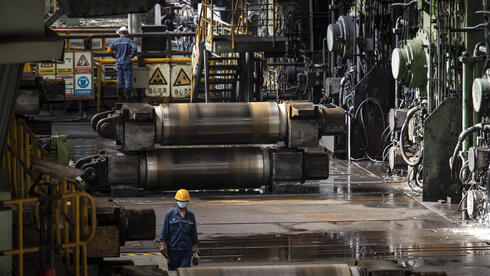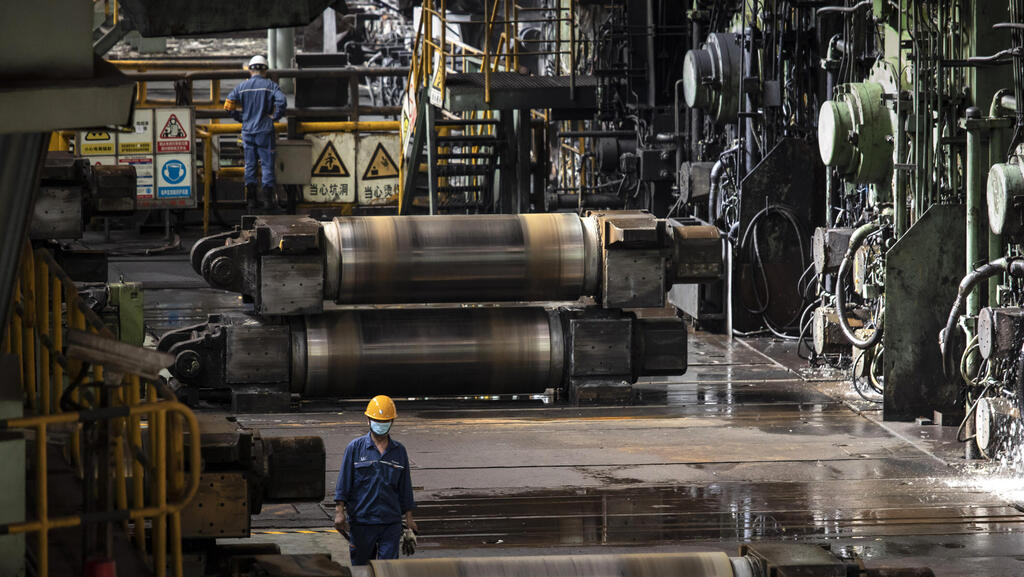
The Iron Curtain falls: China’s steel exports surge amid domestic crisis
As real estate woes deepen, China floods global markets with low-cost steel, sparking international backlash.
The world's largest steel producer, the state-owned Chinese company Baowu, warned last week that Chinese steel producers are entering a "steel winter" that could last longer than the previous crises in 2008 and 2015. The grim outlook is driven by the prolonged crisis in the Chinese real estate market, which has sharply reduced demand for steel.
The timing couldn't be worse. China's economy grew by only 4.7% in the second quarter of this year, missing the forecast of 5.1%.
The Chinese steel industry, largely dominated by state-owned companies, is a product of the two previous crises that hit it this century. Baowu itself was formed through a 2016 merger of two state-owned companies, prompted by the 2015 crisis. This merger quickly made Baowu the second-largest steel company globally, and by 2022, it had become the largest. China, as a country, remains the world’s leading steel producer by a significant margin. In June 2024, China accounted for 43% of global steel production. India, the second-largest producer, lags far behind with just 8%. The U.S., ranked fourth, produces only 8% of what China does. In 2023, China produced 46% of the world’s steel, with Baowu alone responsible for 7%.
The Chinese real estate market has experienced two significant contractions, 21% in 2022 and 39% in 2023. Construction starts, which heavily rely on steel, fell by about 24% in the first half of 2024. This has severely impacted the local steel market, where 55% of steel output typically goes to the construction sector. According to Chinese government data, the largest export market for Chinese steel by value in 2023 was South Korea, with $6.3 billion. Vietnam was second with $6.08 billion, followed by the European Union, which imported $4.14 billion worth of Chinese steel.
The sharp drop in domestic demand has left Chinese steel producers with a dilemma: maintain production levels or slow down due to decreased demand. The last thing that enterprises and the Chinese government want during this broader economic slowdown is to cut back even more. "Next year, we must pursue progress while maintaining stability, promote stability through growth, and establish the new before dismantling the old," Chinese President Xi Jinping was quoted as saying in an official article reviewing a major government conference last December, where China’s economic agenda for 2024 was mapped out. Xi reiterated this message at the party’s annual meeting in March, where participants also acknowledged "overcapacity in certain industries." The Chinese government has chosen to push forward in emerging industries like electric vehicles and solar panels before addressing the existing issues in traditional sectors. Until then, China has little choice but to export aggressively to stabilize the economy and create jobs, assuming it’s better to close a steel plant in Chile than in China.
The price of iron ore plummeted
Indeed, in line with this policy, local steel production decreased by only 2.2% in the first half of the year, with a significant slowdown of 9% reported in June compared to the same month in 2023. All energy was redirected to exports: Chinese manufacturers increased steel exports by about 17% in the first half of 2024 compared to the same period in 2023, totaling 53 million tons—an eight-year export record. This means that throughout most of the past year, Chinese manufacturers opted to sell at a loss to avoid production cuts that could damage future capacity and market share. This policy has sharply driven down the prices of raw materials for the construction industry.
As a result, the price of iron ore (the raw material used to produce steel) has fallen by more than 33% since the beginning of the year and is currently trading at an almost two-year low. In July 2021, as the world began to recover from the pandemic, iron ore traded at an all-time high of $220 per ton. The flood of underpriced Chinese steel on global markets has prompted governments to take protective measures for local producers. Earlier this month, the European Commission announced it would investigate Chinese companies for allegedly dumping steel at below-market prices. The Commission also announced restrictions on certain types of steel imports. Other countries, including Vietnam, the United States, Saudi Arabia, Brazil, and Chile, have launched similar investigations. Thailand and India have imposed tariffs on Chinese steel for several years. India did so after becoming a net importer of steel in 2024, despite being the world's second-largest producer. In Brazil, local steel producers have asked the government to impose tariffs of 9.6% to 25% on imported steel products.
Mexico imposed an 80% tariff on Chinese steel imports, in coordination with the United States, which fears China might try to smuggle cheap steel through its southern border. In April, President Joe Biden announced a doubling of tariffs on Chinese steel products, raising the average from 7.5% to about 22.5%. A similar tax is applied to metals imported from Mexico that are made from Chinese steel. "Chinese steel and aluminum entering the U.S. market through Mexico are evading tariffs, undermining our investments and hurting American workers in states like Pennsylvania and Ohio," said Lael Brainard, director of the White House's National Economic Council. In response, the Chinese embassy in the United States called the accusations of Chinese oversupply "baseless" and claimed they were "a political tool used by the United States to discredit and suppress the Chinese economy."
"The situation is not sustainable"
The pressure from Chinese exports is being felt by manufacturers worldwide. The world's second-largest steel producer, the Indian-owned Swiss company ArcelorMittal, stated in its second-quarter results that China’s overproduction has made steel market conditions unbearable. “Steel prices in Europe and the United States are below marginal cost,” said an ArcelorMittal spokesperson, adding, “The current market situation is unsustainable.” German steel company Salzgitter reported a loss in its first-half results last week, attributing part of the decline to excess capacity and Chinese exports. Chile’s largest steel company, CAP, announced the closure of its Huachipato steel plant earlier this month, while the country’s biggest steel producer, Compañía Siderúrgica Huachipato, recently said it would indefinitely shut down steel operations due to “the inability to compete with Chinese steel.”
Amid growing global market pressures due to excessive Chinese steel exports and increasing protectionist measures by other countries, China is forced to seek new approaches to stabilize the situation. The government in Beijing understands that the industry’s future depends on balancing supply and demand and managing global trade frictions. The first sign that Beijing may realize it is pushing the limits too far came at the end of last week, when the administration unexpectedly announced it would halt the approval of new steel mills. The system, which has been in place for years, was designed to encourage growth and more efficient steel production.
The real estate crisis: a government-made catastrophe
The catalyst for the steel crisis, now a source of enormous geopolitical tension, is the Chinese property crisis—a crisis entirely of the government's making. After years of fueling a real estate boom that eventually accounted for about 29% of China’s GDP, the government decided in 2020 to stop providing cheap loans to developers. This led to a wave of bankruptcies among highly leveraged developers, including Evergrande, the world’s largest debtor and the biggest property developer. Its liabilities were estimated at around $300 billion.
It’s currently estimated that there are about 10 million apartments in China that were sold by developers but have yet to be completed, leaving buyers without the properties they paid for. According to research by Rhodium, the total loans of the local real estate sector amount to about $10 trillion. At the same time, the crisis has left another 4 million unsold apartments on the market, which Chinese buyers are reluctant to purchase—whether due to financing difficulties or the crisis of confidence created by developers’ collapses. In May, China unveiled its first plan to rebuild the housing market using these empty apartments. The state provided about $42 billion to finance government real estate companies' purchases of these apartments, which are to be offered for rent at discounted rates. The revenue from this is intended to fund the completion of unfinished apartments.
The state allows loan eligibility only for projects on the "white list." This includes approximately 8,200 projects identified by local authorities and approved by the Ministry of Housing and Urban-Rural Development (MOHURD) and the National Financial Regulatory Authority (NFRA). These two agencies are responsible for approving the projects and coordinating loans for them, prioritizing projects where buyers have paid in advance but construction has yet to be completed. This is just the latest in a series of measures aimed at resolving the crisis. The Caixin news channel listed over 300 measures designed to restore public confidence in the Chinese real estate market. Their goal is also to help local authorities recover from the loss of a major revenue stream—the sale of land—and to restart a sector that provides millions of jobs.
The crisis has had a ripple effect on the economy. It caused an immediate drop in demand for building materials and labor, contributing to the sharp decline in steel prices. Another impact is the reduction in job availability, as authorities that relied on land sales revenue have had to tighten their budgets. Homebuyers who have yet to receive the apartments they paid for are also forced to cut back on spending.














